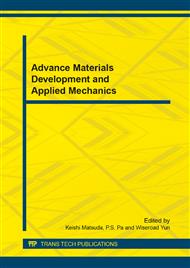p.170
p.175
p.184
p.188
p.195
p.203
p.208
p.213
p.219
A Method to Select Optimal Cutting Force Model Using the Measured Process Transfer Function
Abstract:
The cutting stability is determined by the dynamics of the tool-workpiece and the cutting process. Several cutting force models have been established by the former researches. Based on the analysis of the cutting process transfer function derived from the cutting force models, the characteristics of these models were analyzed in this work by ploting the function curves in the complex frequency plane. The curve shapes and centers were considered as the indicator to estimate the suitability of a cutting force model. An experimental method was proposed to select suitable cutting force model for a real cutting process.
Info:
Periodical:
Pages:
195-202
Citation:
Online since:
July 2014
Authors:
Keywords:
Price:
Сopyright:
© 2014 Trans Tech Publications Ltd. All Rights Reserved
Share:
Citation:


